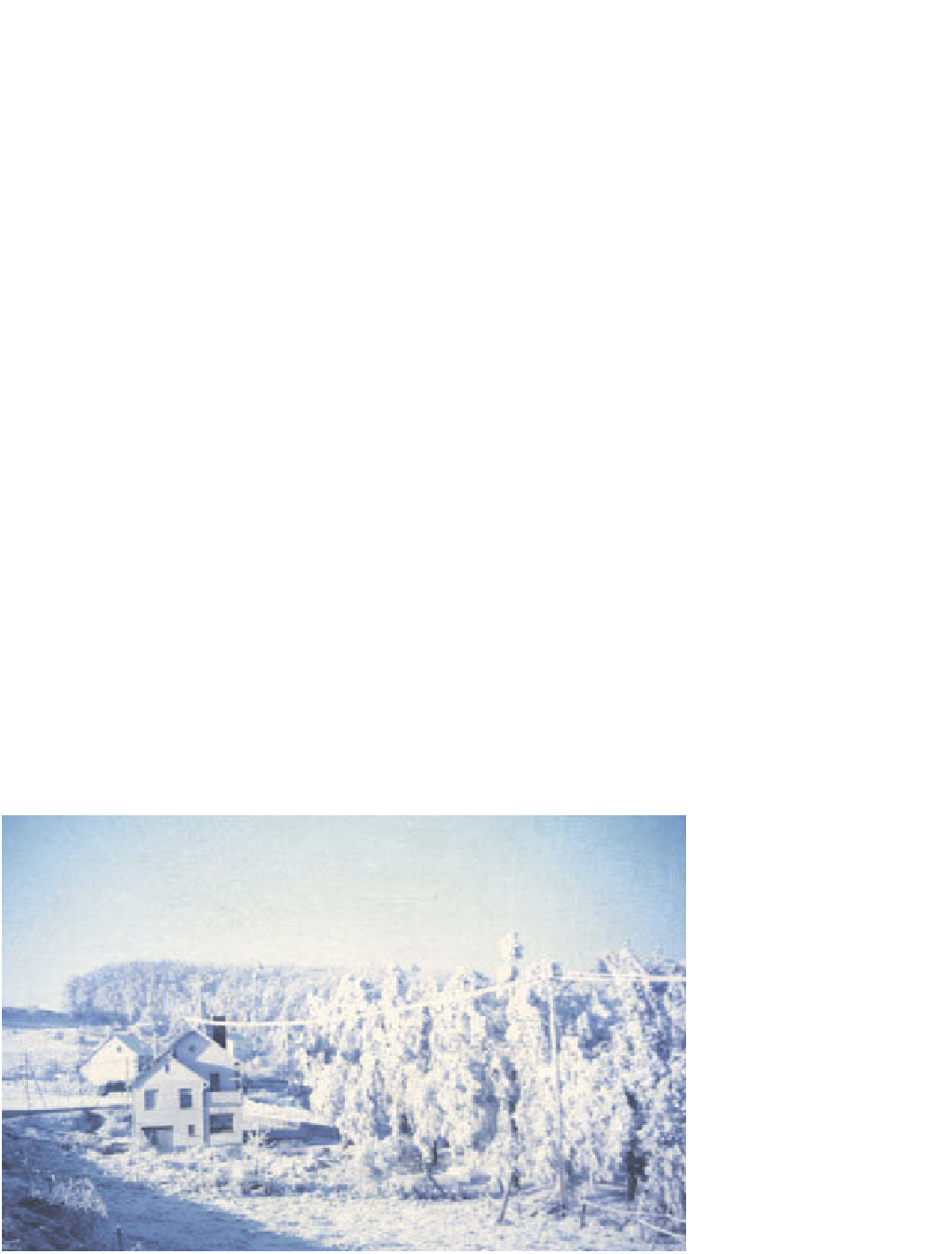Geoscience Reference
In-Depth Information
recording stations gave an average of five storms per year.
When the network was increased to one observer per 10
km, eighty days with hail were recorded.
moving horizontally by contact with the vegetative
surface. Eventually the droplets combine to form larger
drops which fall to the ground. The effect is accentuated
if the trees increase the turbulent motion of the air as it
moves over the canopy. The vertical motion brings the
cloud droplets downwards and impacts them on to the
leaves.
Fog-drip is most important in areas where forested
mountain ridges extend into persistent cloud sheets which
produce little precipitation by normal methods. Examples
include California, Hawaii, Tenerife and Japan. Studies in
all these areas indicate that there is a significant increase
in moisture input at the ground which would not
otherwise occur. At Berkeley, California, as much as
200-300 kg of water per square metre of surface is found
during the summer, when little rain falls. On Hawaii trees
planted at 800 m altitude catch trade-wind cloud droplets
at the rate of about 4 mm per day; over the year this
represents an input of about 750 mm to the island's water
budget. Without this additional input it is unlikely that
the forests would be able to survive. Coastal deserts such
as in Namibia, Oman and Peru also have this feature
where fog droplets can be caught by shrubs or low
vegetation. In Chile at 30°S, 10,000 l of water per day are
collected by nets capturing advection fog from the nearby
cold Humboldt Current.
If temperatures at the ground are below freezing point,
the drifting cloud droplets freeze on the vegetation to form
rime. Although this may occasionally produce spectacular
is small.
Dew, fog-drip and rime
Walking through grassland on a cold autumn morning
after a clear night, we would almost certainly be conscious
that the vegetation was moist from dew and guttation
drops. Similarly, in a dense tropical forest with lots of mist
or cloud we might see, hear or feel water dripping from
the leaves as fog-drip. In these two cases we are dealing
with some of the smallest contributors to the precipitation
input, although locally they may have some importance.
Dew forms on cold surfaces at night when the air is close
to saturation. Under these conditions, of course, the air
can hold little moisture and, as the atmosphere loses
moisture to the ground in the form of dew, it dries out
further. Consequently the total amount of dewfall that can
occur in a single night in temperate latitudes is normally
limited, rarely more than 0·6 mm. The moisture released
through the plant stomata at night will also condense on
the leaves as guttation drops and is often more important
than dewfall. In tropical forests the amounts can be greater
but they still form an insignificant proportion of the
annual total. As evaporation rates are high once the sun
rises, such small quantities of moisture are soon returned
to the atmosphere, so the contribution of dew to the local
water budget is likely to be negligible.
Where cloud droplets are blowing continuously across
a rough surface such as a forest we get fog-drip. The
process results from the deposition of small water droplets
Plate 5.3
Rime accumulation in the
Westerwald, Germany.
can be determined, as rime
will grow into the wind when
supercooled droplets freeze
on contact with the frozen
surface.
Photo: Peter Smithson










































